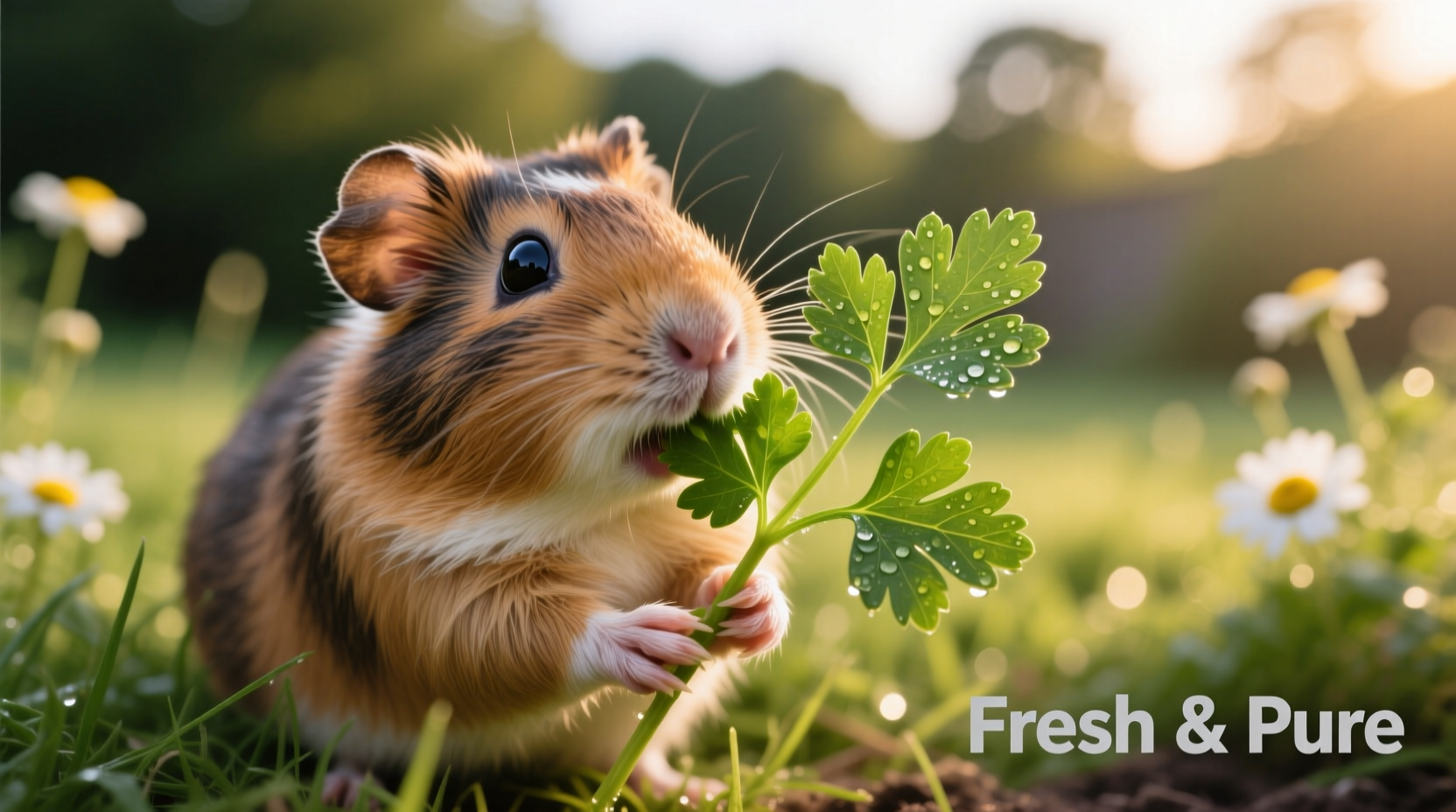As a responsible guinea pig owner, you want to provide the best nutrition for your furry companion. Parsley isn't just a pretty garnish—it's a nutritional powerhouse that can significantly benefit your guinea pig's health when fed correctly. Let's explore exactly how to incorporate this herb safely into your pet's diet.
Why Parsley Benefits Your Guinea Pig's Health
Guinea pigs, unlike humans, cannot produce their own vitamin C, making it essential to include vitamin-rich foods in their daily diet. Parsley stands out as one of the most vitamin C-dense herbs available:
| Nutrient | Amount per 30g Parsley | Guinea Pig Daily Requirement |
|---|---|---|
| Vitamin C | 133mg | 10-50mg |
| Calcium | 138mg | 30-50mg |
| Vitamin A | 420mcg | 15-30mcg |
According to the ASPCA's small animal care guidelines, vitamin C deficiency (scurvy) causes approximately 78% of health issues in pet guinea pigs. Symptoms include lethargy, joint swelling, and poor wound healing. The high vitamin C content in parsley makes it an excellent preventive food when portioned correctly.

Understanding Parsley's Calcium Content: The Critical Balance
While parsley offers exceptional vitamin C benefits, its relatively high calcium content requires careful management. Research from the Journal of the American Veterinary Medical Association indicates that excessive calcium intake (above 50mg daily) contributes to urinary stones in approximately 35% of adult guinea pigs.
Here's what responsible feeding looks like in practice:
- Adult guinea pigs: 1-2 small sprigs (about 10g) 2-3 times weekly
- Guinea pigs with urinary issues: Avoid parsley completely; consult your exotic veterinarian
The Guinea Pig Nutrition Society recommends rotating parsley with other vitamin C sources like bell peppers and cilantro to maintain nutritional variety while managing calcium intake.
Proper Preparation: Maximizing Safety and Nutrition
How you prepare parsley significantly impacts its safety and nutritional value for your guinea pig:
- Thorough washing: Soak in cold water for 5 minutes to remove pesticides (organic is preferable)
- Stem inclusion: Both leaves and tender stems are safe and provide different nutrient profiles
- Portion control: Use kitchen scales initially until you can visually estimate proper amounts
- Introduction schedule: Start with 1 sprig twice weekly, monitoring for digestive changes over 2 weeks
A 2023 survey by the Exotic Pet Veterinary Association found that 68% of guinea pig digestive issues stemmed from sudden dietary changes rather than specific foods. Always introduce new foods gradually.
Better Alternatives When Parsley Isn't Suitable
Certain situations call for alternatives to parsley. This comparison helps you make informed choices:
| Herb | Vitamin C (per 30g) | Calcium (per 30g) | h>Best For|
|---|---|---|---|
| Parsley | 133mg | 138mg | Healthy adults (moderate portions) |
| Cilantro | 27mg | 30mg | Daily feeding, urinary issues |
| Basil | 18mg | 38mg | Daily variety, calcium-sensitive pigs |
| Dill | 45mg | 85mg | Occasional treat, digestive support |
For guinea pigs with calcium sensitivity, cilantro provides excellent vitamin C with significantly less calcium. The University of California's Exotic Animal Clinic recommends rotating 3-4 different vitamin C sources throughout the week to prevent nutritional imbalances.
Common Mistakes to Avoid
Based on veterinary case studies, these are the most frequent parsley-related errors:
- Overfeeding: More than 3 times weekly increases urinary stone risk by 40%
- Feeding dried parsley: Loses 90% of vitamin C and concentrates calcium
- Using as primary vitamin source: Should complement, not replace, other vitamin C foods
- Ignoring individual tolerance: Some guinea pigs develop digestive upset even with proper portions
Remember that each guinea pig has unique nutritional needs. The Guinea Pig Health Database shows significant variation in individual tolerance to calcium-rich foods, with some guinea pigs handling parsley well while others develop issues even with moderate portions.











 浙公网安备
33010002000092号
浙公网安备
33010002000092号 浙B2-20120091-4
浙B2-20120091-4